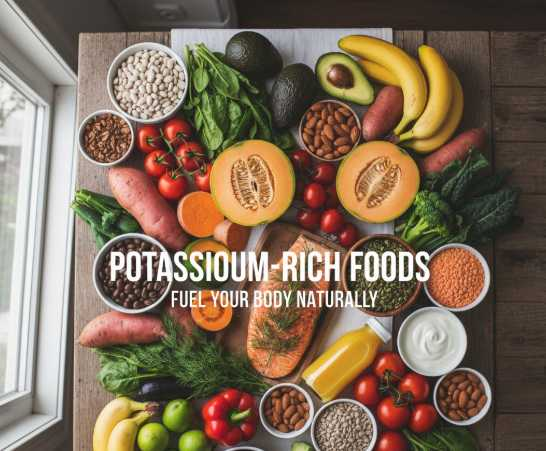Autism Spectrum Disorder (ASD) is a developmental condition that affects millions of children worldwide, impacting their ability to communicate, socialize, and engage with the world around them. For parents and caregivers of children with autism, finding the right therapies and interventions can be life-changing. One of the most effective and widely recommended therapies for children with autism is Applied Behavior Analysis (ABA). In Chicago, ABA therapy is playing a transformative role in improving the lives of children with autism, helping them develop essential skills, reduce challenging behaviors, and achieve their full potential.
In this blog post, we will explore how ABA therapy is making a profound impact in Chicago, why it’s considered one of the most effective therapeutic interventions, and how Communication Clubhouse is contributing to this positive change for children with autism.
What is ABA Therapy?
Applied Behavior Analysis (ABA) is a scientific approach to understanding behavior and how it is affected by the environment. ABA therapy uses principles of learning theory to increase positive behaviors and decrease negative behaviors through reinforcement strategies. The core goal of ABA therapy is to help children with autism improve their communication, social, academic, and daily living skills while reducing behaviors that may hinder their development.
ABA therapy is highly individualized, meaning that treatment plans are tailored to meet the specific needs of each child. It focuses on measurable, observable behaviors, making it easier to track progress and adapt strategies to maximize success. With the right guidance, children can make significant improvements in their ability to engage with others, develop new skills, and integrate more fully into their communities.
Why ABA Therapy Works
ABA therapy is based on decades of research and has been proven to be effective in teaching new skills, reducing challenging behaviors, and improving overall quality of life for children with autism. Here are several reasons why ABA therapy is so impactful:
Evidence-Based and Scientifically Proven: ABA therapy is grounded in solid research, and numerous studies have demonstrated its effectiveness in improving a variety of skills in children with autism. From communication and social skills to academic achievement and independent living, ABA has been proven to bring measurable benefits.
Highly Customizable: One of the greatest strengths of ABA therapy is its individualized approach. Each child’s needs, strengths, and weaknesses are thoroughly assessed, and a customized treatment plan is developed to address their specific challenges and goals.
Focus on Positive Reinforcement: ABA therapy emphasizes the use of positive reinforcement—rewarding desired behaviors with praise, tokens, or other incentives—to encourage children to repeat those behaviors. This approach helps children feel motivated and successful, leading to faster skill acquisition and better long-term results.
Comprehensive Skill Development: ABA therapy is not limited to a single area. It helps children develop a wide range of skills, including language, social interaction, self-care, academic abilities, and problem-solving. This holistic approach ensures that children can build a well-rounded skill set that can help them thrive in school, at home, and in social settings.
Behavioral Flexibility: ABA therapy is adaptable to the child’s progress and evolving needs. As children improve and their skills expand, their treatment plans can be adjusted to focus on new challenges, ensuring continued growth and development.
The Role of ABA Therapy in Transforming Lives in Chicago
In Chicago, ABA therapy has been a game-changer for families with children on the autism spectrum. The city boasts numerous clinics and organizations dedicated to providing high-quality ABA services, making it one of the most accessible areas for autism treatment in the country. Here's how ABA therapy is making a profound impact on children with autism in the Chicago area:
1. Improved Communication Skills
For children with autism, communication can be a significant challenge. Many children with autism have difficulty expressing their thoughts, feelings, and needs, which can lead to frustration, anxiety, and social isolation. ABA therapy focuses on teaching communication skills, whether verbal or nonverbal, to help children express themselves more effectively.
ABA therapists use techniques like speech therapy, picture exchange systems (PECS), and augmentative communication devices to help children expand their vocabulary, improve articulation, and understand social cues. Through consistent and structured practice, children can make significant progress in their ability to communicate, which leads to improved social relationships, better academic performance, and increased self-esteem.
2. Reduction of Challenging Behaviors
Children with autism often exhibit challenging behaviors, such as tantrums, aggression, or self-injury, which can disrupt daily life and make it difficult for them to engage in positive interactions. ABA therapy helps children learn how to replace these disruptive behaviors with more appropriate responses by teaching them coping skills, problem-solving, and emotional regulation.
For example, therapists may use techniques like functional behavior assessments (FBA) to identify the causes of challenging behaviors and develop strategies to address them. Through consistent reinforcement and behavior modification, children can learn more appropriate ways to express themselves, which leads to a more harmonious home and school environment.
3. Enhanced Social Skills
Social interaction can be particularly challenging for children with autism. They may struggle with initiating conversations, interpreting social cues, and understanding the perspectives of others. ABA therapy teaches children essential social skills such as sharing, taking turns, making eye contact, and understanding personal space.
By practicing these skills in a structured environment with the guidance of trained therapists, children with autism can gradually become more confident in social situations. Improved social skills can help children build lasting friendships, integrate more easily into classroom settings, and feel more connected to their peers.
4. Development of Independent Living Skills
ABA therapy also plays a critical role in helping children with autism develop the skills necessary for independent living. Many children on the autism spectrum struggle with tasks like dressing, feeding, and grooming. ABA therapy focuses on teaching these functional life skills to promote greater independence.
Therapists work closely with children to break down complex tasks into smaller, manageable steps, gradually building their confidence and ability to perform these tasks on their own. As children acquire independence in daily activities, they develop a sense of accomplishment, which positively impacts their self-esteem and overall well-being.
5. Academic Success
For children with autism, achieving academic success can sometimes be an uphill battle. ABA therapy supports academic achievement by reinforcing learning strategies and promoting attention, focus, and problem-solving skills. Many ABA techniques are implemented within the classroom setting to help children engage with the curriculum and overcome academic barriers.
ABA therapists may work alongside educators to develop individualized learning plans, provide extra support, and ensure that children with autism are fully included in academic activities. This collaborative approach helps children stay on track with their education and reach their full academic potential.
How Communication Clubhouse Is Making a Difference in ABA Therapy for Children with Autism
At Communication Clubhouse, we are dedicated to providing personalized and effective ABA therapy services to children with autism in Chicago. We understand the challenges that parents face when caring for a child with autism, and we are committed to supporting both children and their families every step of the way.
Our team of highly trained and experienced therapists works closely with each child to develop an individualized ABA therapy plan that meets their unique needs. We focus on building essential skills such as communication, social interaction, self-care, and academics while reducing challenging behaviors that may interfere with a child's progress.
At Communication Clubhouse, we emphasize:
Collaborative Care: We work closely with families, educators, and other professionals to ensure a holistic approach to therapy. By maintaining open communication and collaboration, we help create a supportive environment that fosters success.
Customized Programs: We recognize that every child is different, and that’s why we design therapy programs tailored to each child’s abilities and goals. Our therapists assess each child’s strengths and challenges and adjust the therapy plan as needed to ensure continuous progress.
Family Support: We believe that the involvement of family members is crucial to the success of ABA therapy. We provide training and resources to parents and caregivers so they can continue to support their child’s development at home.
Compassionate Care: Our therapists are passionate about making a positive difference in the lives of children with autism. We approach every child with patience, empathy, and respect, creating a nurturing environment where they feel safe and supported.
Conclusion
ABA therapy is transforming the lives of children with autism in Chicago, and its positive effects are felt not only by the children but also by their families and communities. Through evidence-based techniques, personalized care, and a focus on skill-building, ABA therapy is helping children with autism improve their communication, social skills, and daily living abilities, while reducing challenging behaviors. For families in Chicago, partnering with a professional ABA therapy provider like Communication Clubhouse can provide the support and resources needed to help children with autism thrive.
If you are a parent or caregiver looking to explore ABA therapy for your child, we invite you to reach out to Communication Clubhouse. Our team is here to help guide you on this transformative journey, providing expert care and the support needed to empower your child and unlock their full potential.



















